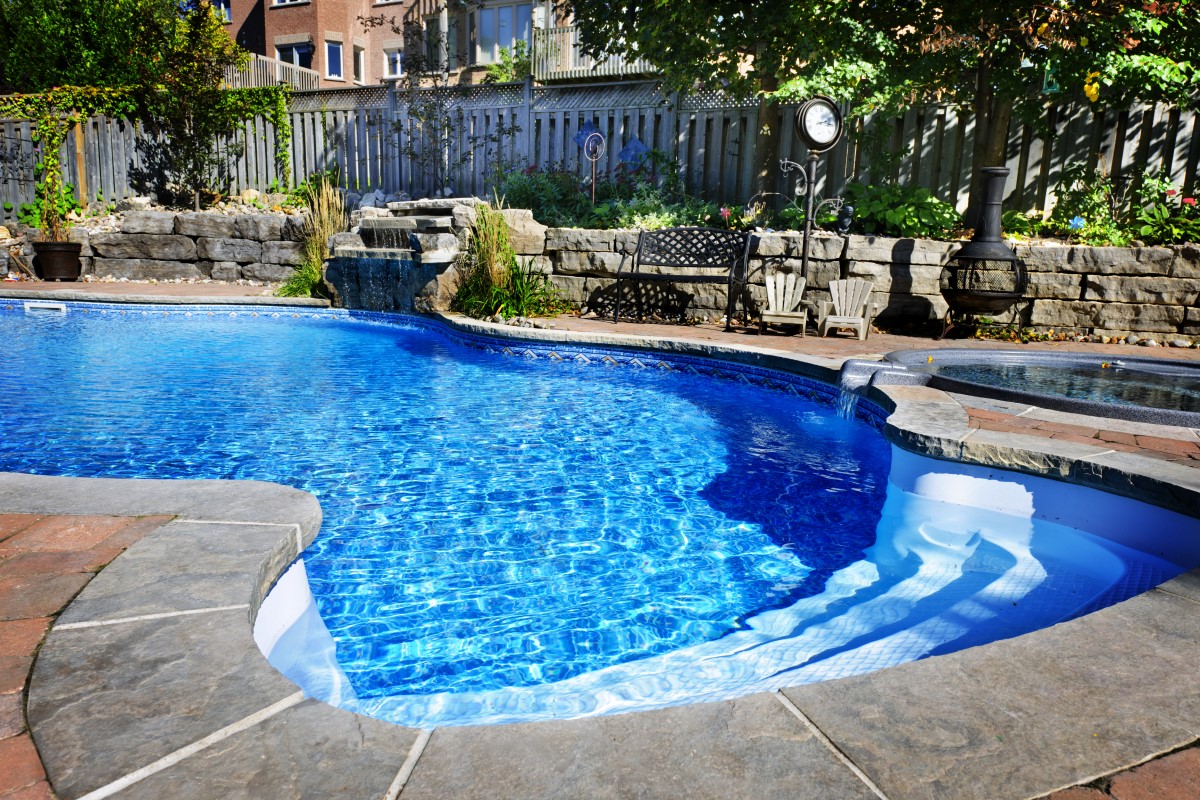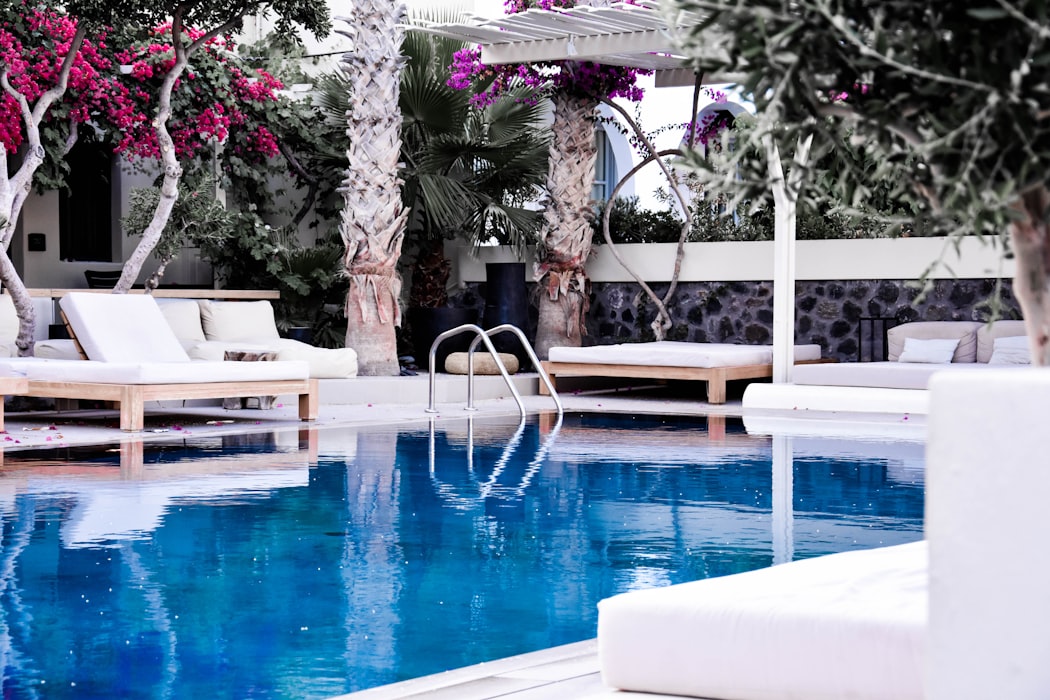
Is an inground swimming pool worth it? Think about it. An inground pool is a great place to spend time with family and friends on a hot summer day. With the barbecue fired up and a cocktail in hand, you can lounge pool while kids splash around.
Sounds like a dream, but is an inground pool right for you?
Remember to make an informed decision when making such an investment. If it makes sense financially, a backyard pool is a dream come true! Ask yourself some questions:
- Will you regret the cost?
- What should you consider before moving forward?
Base your decisions on facts. Read on to learn more about the pros and cons of an inground pool.
Real Estate Value
In the right market, the right pool can appeal to the right buyers. That’s an optimistic statement with limitations. Thankfully, an inground pool can raise your home’s value if it has a great design, is maintained and doesn’t take up much outdoor space. Living in a warm climate where the work and expense is a year-round benefit or a community where it’s commonplace is also helpful. Sometimes you’ll have a smaller pool of buyers, but you might get more for your house if you’re patient.
An inground swimming pool often increases your home’s value. According to HGTV, an inground pool can increase a home’s value by five to eight percent. Therefore, a $500,000 home can increase in value by $25,000 to $40,000. The amount might not cover the entire cost of the pool project, but it makes a difference.
On the flip side, a neglected pool can hurt the value of a home. If pools are left unmaintained for too long, the weathered concrete can eventually crack and leak into the property. Especially in competitive real estate markets, like California, a poorly maintained backyard and pool can be the difference maker in a homeowner receiving offers from prospective buyers or not. Brotherly Love Real Estate, a cash home buyer in San Diego, has experienced this when buying houses in Southern California. They perform thorough inspections of inground pools if they appear damaged before calculating their offers for this very reason.
Pools Aren’t Cheap to Build
The average cost in the U.S. to install, equip and fill a concrete pool starts at $30,000. Add details like safety fences (required by most states), waterfalls, lighting, landscaping and a spa; you’re looking at totals approaching $100,000. Luckily you can forego aesthetic details if they’re out of our budget!
Costs depend on the type of pool you choose. Gunite is the standard for the modern inground pool; it’s a mixture of cement and sand that can be poured into almost any shape. Gunite inground pools are cheaper in the long run as an alternative to fiberglass shells.
Fiberglass shells cost less, but must be replaced every ten years. In turn, you’ll pay more for replacements than you would with a Gunite pool. Changing the liner requires draining the pool and replacing the edging.
Additional Costs: Filtration, Heating and Maintenance
After installing your new pool, you’ll have to deal with upkeep. All pools have filtration and heating systems and have to be maintained. Let’s review each of these points!
Filtration
The filtration pump uses most of the pool’s energy, so efficiency is essential. New, variable-speed pumps use up to 80% less energy than single-speed pumps; this cuts operating expenses.
One of these efficient pumps costs about $500, but some local utilities offer rebates through participating pool dealers. Cut energy costs by scheduling the pump to run at non-peak times when electricity rates are lower.
Heating
Gas heaters are the least expensive to purchase and install. However, they have the highest operation and maintenance costs. Electric heat pumps are the alternative, which extract heat from surrounding air and transfers it to the water. Heat pumps take longer than gas to warm the pool; they’re more energy-efficient, costing $200 to $400 less to operate per swimming season.
Maintenance
Pools need proper pH alkalinity and calcium levels to sanitize and control bacteria and germs. Systems include bromine, salt ozone, ionizers or chemical compounds that are not irritating to the skin.
Chlorine is the most popular because of its low costs. You also don’t have to check levels as often.
In a seasonal swimming climate, budget about $600 annually if you’re chemical balancing yourself. Maintenance costs between $15 and $25 per week where it’s hot year-round.
A robotic cleaning system like this one costs between $500 and $800 and saves you from vacuuming once per week. When you open and close your pool seasonally, add another $500 each time for a pro to handle this task.
Up To You
Your pool is more likely to add value to your home if you live in a hot, tropical area where neighboring homes have pools. In contrast, you might end up with a negative ROI from installing a pool where it’s less common. Building a pool should be more than an investment. It’s tricky because of how many resources one requires. If you’re going to love and enjoy it before you sell it, go for it!
Only you, the homeowner, can determine if it’s worth it. Inground swimming pools can add value to your quality of life and help you enjoy your home. You can’t put a price on happiness!
Family Time… Priceless.
We love our kids and their laughter brings us joy. Our time with our kids as parents is finite. Inground pools are ideal for bonding and playing with our kids! Owning a swimming pool is a great way to make memories and cherish the good times together.
The whole family can benefit from owning a pool. A pool is an entertainment hub for friends, family and visitors to pay, talk, laugh and spend quality tie together. Think of a pool as an oasis to escape the distractions of the normal world. You can also stay cool and exercise in it. There’s no need to spend money on a gym membership when you can get a full body workout in the pool!



